The ASRock X570S PG Riptide Motherboard Review: A Wave of PCIe 4.0 Support on A Budget
by Gavin Bonshor on October 22, 2021 9:00 AM ESTVisual Inspection
The ASRock X570S PG Riptide uses a more neutral color scheme with black and silver throughout, including the rear panel cover, the M.2 heatsink, and the chipset heatsink. Built into the passively cooled chipset heatsink is an illuminated PG (Phantom Gaming) logo, which can be customized via the ASRock Polychrome RGB software. Users looking to add extra RGB can do so via two addressable RGB and two regular RGB headers.
For cooling, ASRock includes seven 4-pin headers in total, with one designated as a CPU fan, one for an optional CPU fan and water pump, and five for chassis fans and water pumps. Other notable headers include a 5-pin Thunderbolt AIC card header, a front panel USB 3.2 G2 Type-C header, two USB 2.0 headers (four ports), and two USB 3.2 G1 Type-A headers (four ports).
Dominating the lower section of the board is plenty of PCIe real estate for a budget board. This includes three full-length PCIe 4.0 slots that can operate at x16/x4/x2, with three smaller PCIe 4.0 x1 slots. For storage, ASRock has one PCIe 4.0 x4 M.2 slot, one PCIe 4.0 x4 with SATA support, and six SATA ports with support for AMD RAID 0, 1, and 10 arrays. The top-mounted PCIe 4.0 x4 slot includes an M.2 heatsink, while the second slot does not. ASRock also has its patent-pending graphics cardholder, which helps reduce sag from heavy graphics cards.
In the top right-hand corner of the board are four memory slots with support for up to 128 GB. In terms of speed, the PG Riptide supports memory with speeds of up to DDR4-5000 out of the box when used with a Ryzen 5000 series processor.
Looking at the power delivery on the X570S PG Riptide, ASRock is advertising a 10-phase design. Dissecting it, the power delivery is controlled by a UPI UP9595S PWM controller operating in a 4+2 configuration. ASRock includes eight Vishay SIC654 50 A power stages with dual UPI UP1911R smart PWM doublers for the CPU section, making it a doubled 4-phase design from a technical standpoint. On the SoC section, ASRock is using two independently operated Vishay SiC654 50 A power stages. It's not as over-engineered as some power deliveries, but for the price point, it's more than enough to operate Ryzen 5000 without issues.
ASRock is using a simple power delivery heatsink which doubles up as the board's rear panel cover. The design is more about catching passive airflow over high levels of mass, which means it should handle an overclocked processor as this is the only section of the VRM the heatsink covers. The SoC section of the power delivery is solely reliant on passive airflow directly over the bare power stages.
Focusing on the audio section of the board's components, ASRock uses a Realtek ALC897 HD audio codec, which is aging, yet still entirely acceptable for an entry-level model today. Assisting the HD audio codec are four Japanese gold Nichicon audio capacitors, with a front panel header available for users to use. There is also a small line of separation between the audio PCB and the rest of the board.
The rear panel of the ASRock X570S PG Riptide is one USB 3.2 G2 Type-C, one USB 3.2 G2 Type-A, four USB 3.2 G1 Type-A, and two USB 2.0 ports. Also present is a PS/2 combo port for legacy peripherals, five 3.5 mm audio jacks, and S/PDIF optical output powered by a Realtek ALC897 HD audio codec, as well as a single HDMI 2.1 video output for users looking to utilize AMD's Ryzen APUs. ASRock includes a blanking plate for the installation of an M.2 Key E Wi-Fi adapter, while a small BIOS Flashback button finishes off a modest rear panel.
What's in The Box
The main bulk of the accessories within the ASRock X570S PG Riptide box include a pair of SATA cables, ASRock's graphics card holder, three M.2 screws, and one M.2 standoff. There is also a quick installation guide, a software and drivers installation disc, and a rear I/O shield.
- Quick installation guide
- Software/Driver installation disc
- 2 x SATA cables
- 3 x M.2 installation screws
- 1 x M.2 standoff
- ASRock Graphics Card Holder
- 2 x Velcro cable ties
- Rear I/O shield
- ASRock case badge



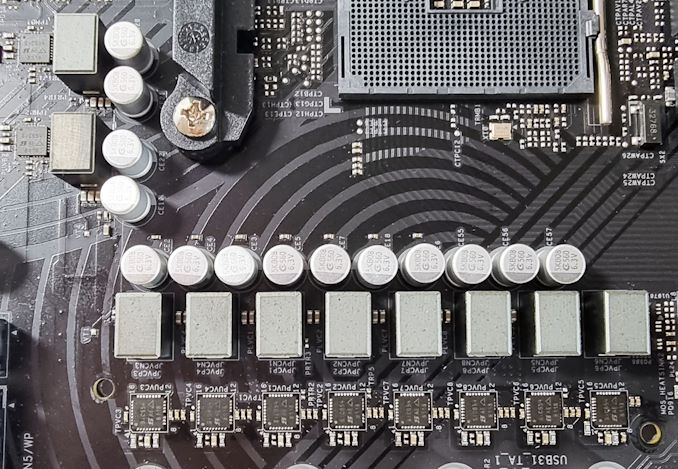
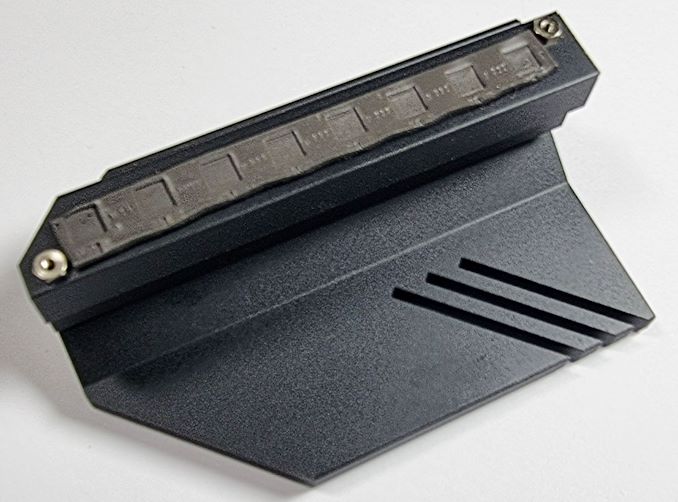
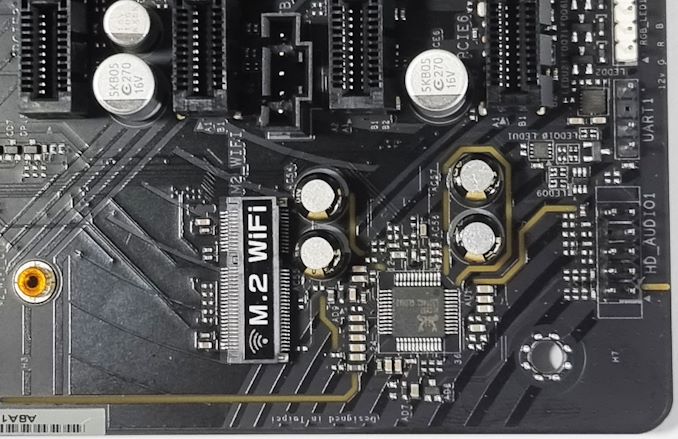

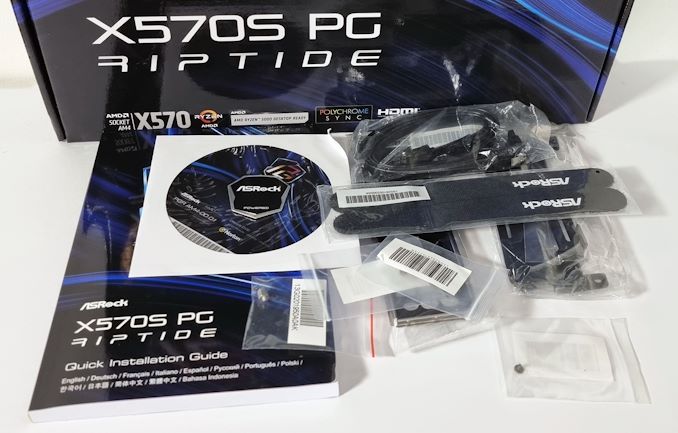








39 Comments
View All Comments
Arbie - Friday, October 22, 2021 - link
$185 - which you could spend on a set of aluminum lawn chairs. I am continually astounded that an ultra-high tech assembly like this, with hundreds of parts each microscopically created, comprising millions of transistors, and with multiple PCB layers, countless holes precisely drilled, and the whole thing electrically and electronically designed, all the drawings, BOM, logistics, testing etc, can appear on a shelf here at this price. Or at twice the price. Or three times.Just an observation...
meacupla - Friday, October 22, 2021 - link
That's because your aluminum lawn chairs are overpriced, and have significantly better margins. They probably only cost around $20 to make, $30 to ship, and $30 to store in a your local warehouse, until you bought them. That leaves more than a 50% profit margin for the manufacturer.Where as Mobos have significantly less margin. Mobo makers only have around 10% profit per sale of a mobo, and less than 8% on graphics cards, by the time you can buy one locally. This is also the reason why it's so hard to get RMAs on mobos and graphics cards for certain manufacturers.
Arbie - Friday, October 22, 2021 - link
So if lawn chairs cost half as much, mobos would be 0.5 x 10^6 more complex per dollar, instead of 1.0 x 10^6. I get it.TheITS - Friday, October 22, 2021 - link
It's much more logically explained by economies of scale, not complexity.Arbie - Friday, October 22, 2021 - link
I doubt that orders of magnitude more "ASRock X570S PG Riptide" mobos will be sold than say "Walmart Model XYZ" lawnchair sets. There are major economies of scale in the electronic subcomponents, but the lawnchairs have some too.Overall, I can far more easily see how lawnchairs might arrive at such a price than how a mobo can. In fact the latter appears miraculous compared to almost anything within 10x its price.
Wrs - Saturday, October 23, 2021 - link
Bulk is a primary cost factor for lawn chairs made abroad. It limits how many products you can pack per container for shipment. For a typical product originating from SE Asia, remember each container has to make the sea and land journey round trip. That typically ranges from $25000-40000 for a 40' truckload to the US, or $600-1000 per linear foot. This holiday season there are unusual shipping backlogs and the price has spiked to $2000 or something. Might not be the best year to get lawn chairs. A corollary is that the more compact the chairs fold or stack into, the cheaper they can be sold for.A mobo box being around 2 large books is comparatively easy to pack, but more importantly the tiny size of most of the components makes shipping costs to assembly site almost trivial. With Moore's law shrinking chips so much, one can still pack millions of transistors on a mature node for just pennies.
ballsystemlord - Friday, October 22, 2021 - link
Technical correction @Gavin . You didn't mean to write "... and three PCIe 4.0 x4 slots." You intended "... and three PCIe 4.0 x1 slots".geniekid - Friday, October 22, 2021 - link
How well does the GPU bracket/holder actually work?Tomatotech - Friday, October 22, 2021 - link
You know, I’m reading this mobo review after reading the details of the new M1 Pro / Max SoC, and all I can think of is that this mobo looks so large and outdated.I think it’s time for processors to start being soldered on, for Intel at least, as they change their sockets so often. I’d happily buy a CPU + mobo + decent igpu + ram + a TB or 2 of SSD space onboard. The whole package should cost less than buying the parts separately and work far better.
The cheaper CPUs can come with 8GB soldered on and the better ones with 16/32/64GB RAM options. 1 TB onboard of fast soldered SSD is enough for most people, and there can still be a M2 slot for adding a few more TB.
I’m not sure how to keep the ability to add a beefy GPU, maybe have a single high speed slot, plus the ability to add a daughterboard with a few more slots if needed, connected by a TB4 cable. (TB is basically PCIe over a cable).
Won’t be to everyone’s taste but it would make life easier and cheaper. Technology marches on and HDDs no longer have replaceable platters (drums), or replaceable arms / actuators. Time to take the next step and integrate the CPU and RAM, god knows Intel’s CPUs need a better RAM connection.
isthisavailable - Saturday, October 23, 2021 - link
How about no?